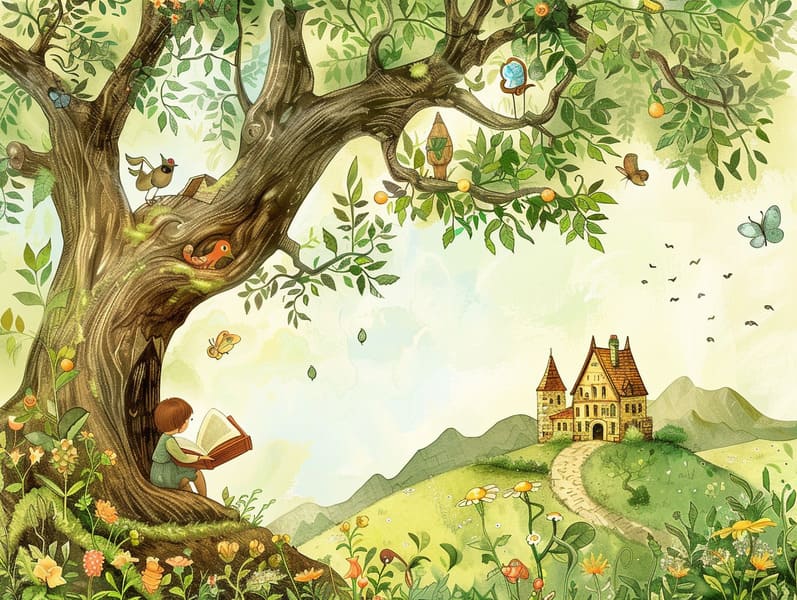The Start of Old Fairy Tales and the Consistent Magic.

Fairy tales for kids have enduring presence. These narratives have been passed down from one generation to the next ages before they were ever published. They developed from a variety of civilizations, including African traditions. They were initially conveyed among older generations, often carrying themes and messages mirroring the societal norms and beliefs of the time.
The Brothers Grimm, Jacob and Wilhelm, were among the first to compile and release many of these beloved narratives. Their published works, "Grimm's Story Collection," included narratives like "Ashenputtel," "The Bread Crumb Trail," and "Snow White," which have since become cornerstones in the world of iconic fairy tales. Similarly, Hans Andersen's imaginative tales, such as "The Story of the Little Mermaid," and "The Duckling that Could," have stolen hearts worldwide, ensuring their place in the pantheon of famous fairy tales.
Even though they are old, these stories remain as significant as ever, especially as nighttime stories for kids. These charming stories are now available in multiple formats, including colorful picture books, delightful animations, and digital storybooks.
Their continued relevance can be ascribed to several magical reasons:
Ethical Lessons: Timeless fairy tales often present important moral lessons. Stories like "The Tale of the Boy Who Cried Wolf" teach the virtue of honesty, while "The Tortoise and the Hare" exemplify the benefits of tenacity and humility. These stories offer young readers clear distinctions between truth and falsehood, developing their moral compass in a mild yet significant way.
Compassion and Knowledge: Timeless fairy tales frequently illustrate individuals facing challenges and problems, encouraging listeners to relate with their struggles and back their triumphs. For instance, "Beauty and Her Beast" demonstrates the importance of seeing beyond looks to see the inner self of a person, fostering understanding and understanding.
Cultural Understanding: Many ancient fairy tales are interwoven with the cultural contexts from which they emerged. Delving into these narratives can provide enlightening views into different historical contexts, advancing a sense of world insight and respect.
Imagination and Innovation: The enchanted elements in fairy tales—enchanted forests—generate children’s imaginations. These tales guide readers to supernatural realms, promoting creative ideas and a sense of magic that remains a lifetime.
Classic fairy tales are not only delightful but also pedagogical. They function as fantastical tools in cultivating various mind and heart abilities in kids. When traditional fairy tales are spoken, they strengthen speaking abilities by bringing new word meanings and complicated sentence structures. This practice also promotes hearing perception and focus, as the young listen intently, expectant to see what happens next.
Furthermore, debating the themes and characters of timeless fairy tales can cultivate evaluative skills and problem-solving abilities. Young readers learn to discern patterns, expect results, and understand cause and effect. These examinations also encourage the young voice their thoughts and feelings, strengthening their emotional intelligence.
In today’s high-tech era, the presence of digital storybooks has made these stories more within reach than ever. Websites and online apps make available ample collections of famous fairy tales that can be perused or listened through anytime, anywhere. Fairy tales voiced are particularly widespread, supplying an fun way for young readers to relish these charming tales. Sound books and read-out-loud videos move characters and settings to life, often supplemented by entrancing harmonies and melodies that intensify the story journey.
The timeless appeal of traditional fairy tales lies in their ability to evolve to today's society while keeping their central messages. Contemporary retellings of these tales often highlight more multicultural protagonists and modern settings, making them meaningful to today’s audience. However, the central morals of braveness, understanding, and rightness remain unchanged, continuing to resonate with readers of all ages.
Classic fairy tales also offer a sense of reassurance and comprehensibility. They grant access to a well-structured narrative with a recognizable beginning, middle, and end, often closing with the ending of conflicts and the triumph of righteousness over wickedness. This dependability can be calming for children, presenting a sense of dependability in an unstable world.
Timeless fairy tales continue to bewitch and teach new generations, maintaining their loveliness and pertinence in modern society. As bedtime stories for kids, they highlight a perfect blend of delight and instruction, fostering moral values, empathy, and creativity. The accessibility of web-based fairy tales and the likability of fairy tales narrated make sure that these traditional tales remain acquirable to new generations.
By keeping and imparting these stories, we continue to value the rich tapestry of storytelling and cultural heritage. Whether you are browsing a colorful check it out picture book, viewing a internet collection, or listening through an narrated book, the grandeur of classic fairy tales is always within reach. These fairy tales emphasize of the enduring essence of tales and its ability to gather us across epochs and places.
Regardless if you are reading a richly illustrated book, discovering a electronic library, or listening to an read-aloud story, the attraction of classic fairy tales is always within reach.
These fairy tales demonstrate of the immortal ability of storytelling and its ability to tie us across centuries and lands, weaving a spell that charms and informs alike.